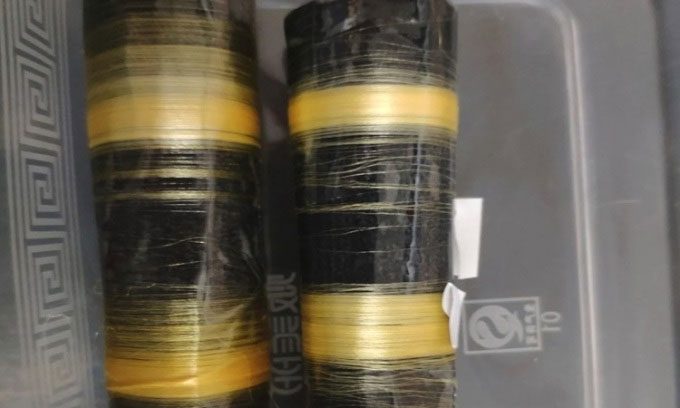Chinese scientists have successfully synthesized the first complete spider silk from genetically modified silkworms, which is stronger than “most natural and synthetic fibers” such as Kevlar.
In a study published on September 20 in the journal Matter, researchers at Donghua University in Shanghai reported that spider silk possesses both high tensile strength and exceptional elasticity. The elasticity of spider silk is six times greater than that of Kevlar, and its tensile strength (the ability to withstand stretching) exceeds that of nylon. Mi Junpeng, the lead author of the study, stated that this new fiber has many applications, including surgical sutures, bulletproof clothing, smart materials, and aerospace technology.

Spider silk produced by genetically modified silkworms. (Photo: Mi Junpeng).
The research team utilized CRISPR-Cas9 gene editing tools to modify the genes of silkworm eggs by introducing spider silk protein genes. This modification caused the silkworms to glow under fluorescence microscopy. To ensure that the genetically modified silkworms produced spider proteins, the researchers first needed to gain a better understanding of the silk structure. They employed a model of silk structure that was validated through successful experiments.
According to Mi, one of the major challenges was determining how to “zone in” on spider proteins so that they could interact with silkworm proteins. The modeling allowed them to better understand what modifications were necessary to ensure effective integration. Additionally, Mi noted that successfully breeding the genetically modified silkworms was also a challenge, as it requires 100 eggs to obtain a few genetically modified silkworms. The silkworms also need regular care since they “eat multiple times a day.”
Spider silk is both environmentally friendly and stronger and more durable than synthetic fibers like nylon and Kevlar, which require high energy inputs during production and contribute to environmental pollution. Spider silk is also more robust and less brittle than natural silk produced by silkworms. However, large-scale production of spider silk is very difficult because spiders are cannibalistic and cannot be raised in large quantities together.
Synthetic spider silk is not ideal, as even the most advanced production methods cannot fully replicate the natural structure due to a lack of understanding of the silk spinning mechanism. Additionally, silk has a natural protective cuticle that cannot be mimicked by artificial methods. The glands in silkworms and spiders have similar characteristics, which is why the silk produced using the researchers’ method retains its structural features and protective layer.
In the future, Mi and his colleagues plan to use synthetic amino acids to modify the silk and produce stronger versions.





















































